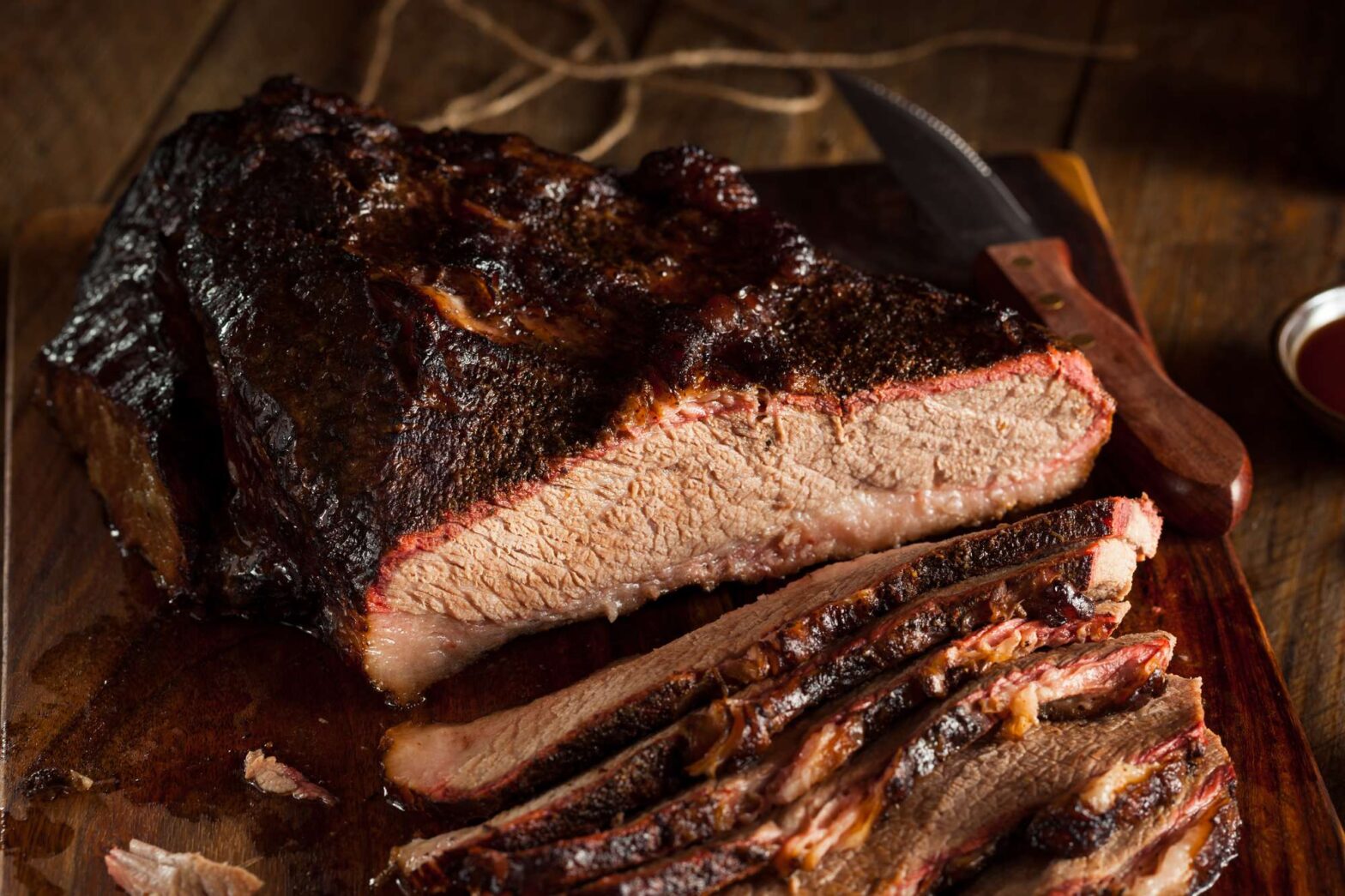For the meat smoker who hasn’t cooked all that many briskets, it is a rightful cause for concern when, after an hour or two of cooking, the internal temperature of the brisket suddenly stops to rise.
When that happens, the thermometer’s reading levels off and the meat, for whatever reason, just seems to quit cooking. I know what you’re thinking, and the answer is “no,” your thermometer’s most probably fine. And “yes,” so is the brisket in your smoker.
So what in the world is going on?
You might wonder, at what temp does a brisket stall, and why does it stall in the first place?
If the internal temperature of your brisket won’t rise during smoking, sometimes for hours on end, don’t fret: Pitmasters call this “the stall,” and it tends to happen at almost every cook, especially on larger slabs of meat.
When you cook brisket, it’s important to not forget it’s a low and slow process.
The brisket in your smoker, as with any other cut of meat, cooks from the outside in. As it cooks, the heat from the air warms the outside and slowly but surely penetrates the inside, raising its internal temperature.
Now, cooking brisket involves the understanding that briskets are big, juicy cuts of meat. They contain a lot of water, and much of what water evaporates during smoking.
According to the folks at the USDA, whole brisket contains 71% water when raw and 56% when cooked. In other words, the heat causes the meat to lose some 15% of its moisture.
Why am I telling you all of this?
Because it has everything to do with why your brisket stalled.
This evaporation of water plays a big role in the brisket stall and the stall temp for brisket.
On a sultry summer’s day, when it’s so hot that you can fry an egg on your truck’s bed, what does your body do to cool itself down? It sweats. The same thing, as it turns out, happens to the brisket in your smoker.
During the cook, the moisture in the brisket starts to evaporate, causing it to sweat on the surface. The perspiration cools the meat and prevents its internal temperature from rising further. Sooner or later, the sweating stops.
The technical term for this is evaporative cooling.
Heat, as the physics teacher taught us in school, is energy. When you heat brisket, you charge it up with thermal energy. Some of that energy is used to convert water into vapor, which escapes the meat and rises up into the air, and the meat’s interior cools down (or, in this case, maintains a steady temperature) naturally.
After a few hours, much of the moisture has escaped, as this method is no longer effective. The stagnation stops and, what do you know, the internal temperature of your piece of brisket is on the rise again.
What to Do When Your Brisket Stalls
I’ve said it before and I’ll say it again: Patience is the unlisted ingredient in every BBQ recipe. If you want your smoked meats to come up mouth-watering and competition-worthy, it is also the cooking technique you need to master most.
When the brisket in your smoker stalls, all you have to do is keep the temperature of your smoker constant, as the recipe dictates, with a fluctuation no greater than 5 to 10 degrees.
Depending on the recipe—and subject to the air temperature and weather conditions—this means you will need to feed fuel to your fire in small amounts and frequent intervals.
I cannot stress enough the importance of maintaining a constant temperature. Do not try to lower or raise the temperature “to get the brisket unstuck.” The result will either be a soggy bark from undercooking, or a brisket that is as tough as the leather on your jacket from overcooking.
As I’m sure you agree, neither of these outcomes sounds particularly appetizing or rewarding after hours of cooking.
How Long Does Brisket Stall For?
Brisket is best smoked low and slow, in a 220°F (105°C) smoker. A smaller brisket will take 6-8 hours, while a larger brisket may take anywhere between 12 and 24 hours to cook. As a general rule of thumb, plan for roughly 1 hour of cooking time per pound of meat.
Nine times out of ten, the brisket will stall at the second hour of cooking and, depending on the size of the meat, will get unstuck at the fourth to sixth hour.
As for internal temperature, brisket usually stalls in the range from 150°F (65°C) to 170°F (76°C). If your brisket stalls at a much lower internal temperature, the heat in your may not be as hot as you need it.
Despite lore to the contrary, the meat does continue to cook during the stall; it just does so at the slow and steady rate of the temperature it stalled at.
In Conclusion
A stalled brisket is a brisket that’s in the process of cooking. When that happens, let it sweat and don’t sweat it: Your job is to keep the temperature in your smoker stable enough for the meat to cook evenly and eventually get itself unstuck.


